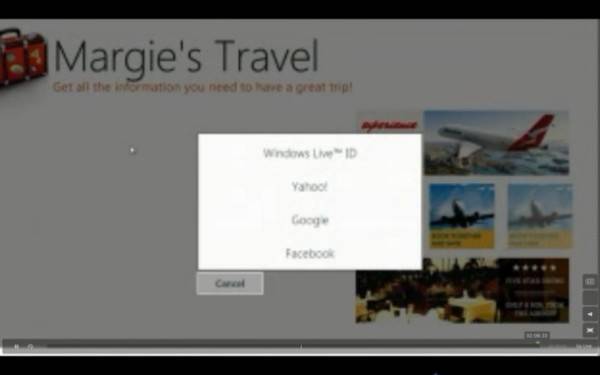
The next edition of Windows Server, still code-named “Windows Server 8,” will have vastly expanded integration with Windows Azure, the company’s cloud platform that started out as simply a .NET application provider. Not only will Azure become (as expected) a platform for providing data and services to Windows enterprise applications, but an identity manager for federating identity across multiple Web services, including client-side Metro apps.
This from the Day 2 keynote at Build 2011 in Anaheim. Enterprise app developers will be able to utilize the Azure Toolkit for Windows 8 to deploy SQL Azure shares that, for instance, collect data from multiple remote sources simultaneously. One example shown in prototype form is a future service from Ford Motor Company that acquires data from hybrid vehicles in real-time remotely. This service may be able to leverage databases for electricity prices in any given region of the country, to estimate the recharging cost for certain areas of the country.
Another example, provided by an automotive electronics provider, goes a few steps further. Such a service would be able to monitor electricity and fuel use, and potentially direct drivers to the best fuel sources for any given area. Such a service, code-named “Viper” (apparently without much respect for Chrysler), would include a feature enabling a Metro app to show the location of selected cars and their certain drivers in real-time.
The implications of an Azure database as a personal tracking and monitoring system were not really touched upon. If they were, perhaps the screenshot at the top of this article, demonstrating the way one can find his daughter if she happens to take the family car, may have been reconsidered.
Perhaps obscured by the ominousness of that demonstration was a more important point overall: The level of integration between SQL Server, SQL Azure, and databases is being tightened and extended to a wider array of languages, especially those that support the WinRT platform.
The result is a migration platform that moves databases and their schemas from the data center into the cloud.
“The Data Platform is a critical consideration for anyone building a continuous service,” said Bryon Surace, a program manager on the Windows Server team. “You need a rich portfolio storage across BLOBs [binary large objects], tables, and full relational capabilities, to be able to handle the complexity and the breadth and depth of data. Today, with a combination of Windows Azure storage and SQL Azure, [you] have that rich portfolio storage. Since SQL Azure is built with SQL Server symmetry, any ISV that has built for SQL Server can migrate this service to Windows Azure and SQL Azure, and benefit from multi-tenant SQL Server in the cloud.”
One of the least publicized stumbling blocks to full-scale cloud adoption today is identity federation. There is already a huge number of so-called “identity providers,” and while some have established secure and well-designed services, social networks have managed to stake more competitive positions based solely upon their reach and large audience.
Today, Microsoft announced that Azure will become available as a platform for identity federation among supporting providers, including competitive social networks such as Facebook, and Microsoft’s own Windows Live ID platform. With an innovative new tool called the Credential Password Vault, individuals who have authenticated (signed on) by way of Azure, using one of the supported credentials, will be cross-authenticated for Web apps that use other credentials. What’s more, the single-sign-on process for one client in a Windows network may be transferrable to other clients in the network.

The credentials selection process for Windows 8 tablets is depicted above (apologies for the grainy image). As a product manager demonstrated, Azure’s new Access Control Service is configurable to support multiple identity providers that Metro apps can plug into directly. Someone who logs on and authenticates using a desktop PC in the office will be automatically authenticated when calling up a Metro app on his tablet. So logging onto Facebook, for instance, triggers a process where identity credentials are called from the Password Vault using the Access Control Service.
“The Access Control Service… represents the key way that we’re going to get to this integrated experience across applications, services, and rich collections of data,” Microsoft’s engineer for identity apps explained. This enables a kind of instant mashup of apps and functions that all require separate, often incompatible identity credentials formats. Accessing this credentials store is a feature of the Azure Toolkit for Windows 8, which is part of the developers’ tools being released here at Build 2011 this week.










